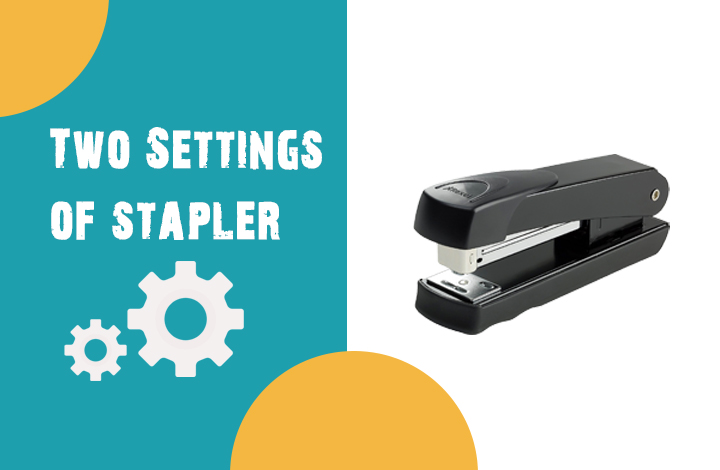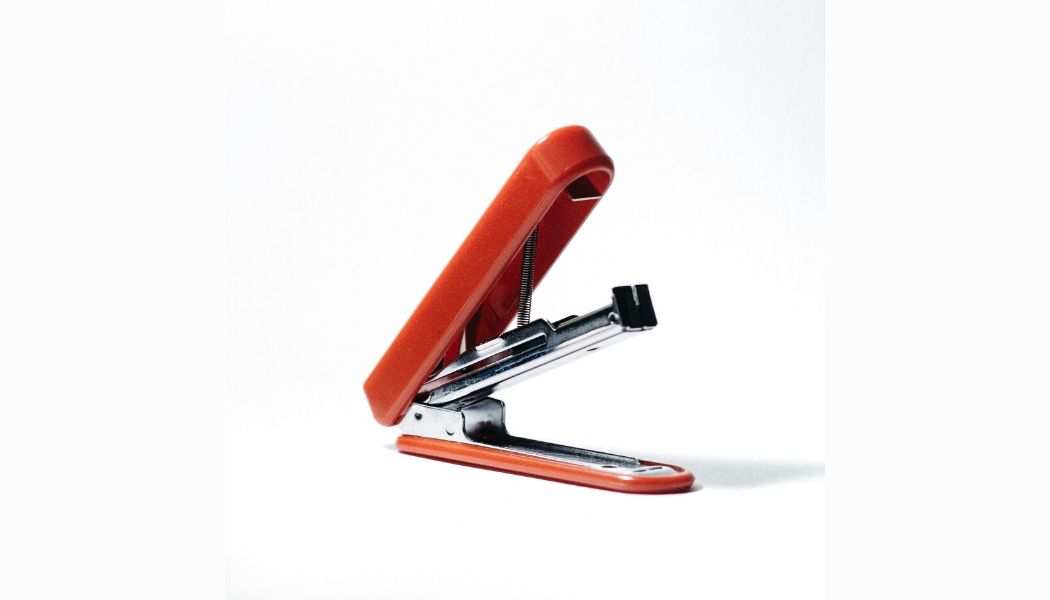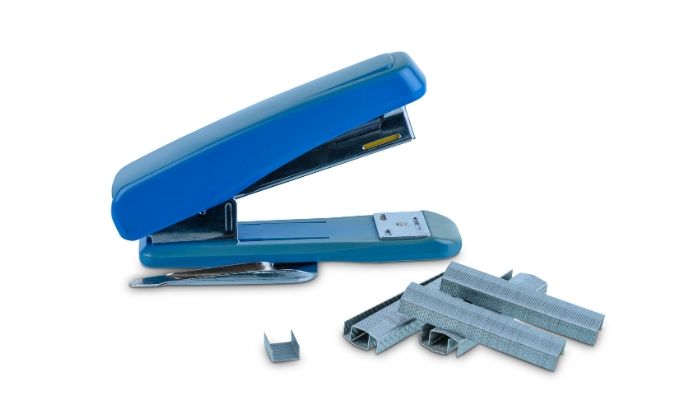Many people who use common office staples do not give them much thought. As long as the stapler is working well, fastening papers together, or attaching flyers to bulletin boards, minimal attention is offered to them. However, having a closer look at the anvil or the strike plate, you will notice that there are two types of grooves.
The presence of the two types of grooves is because the base plate is reversible. This means that you can rotate it to change which groove should be hit by the staple wire when it comes through the stack of paper you are fastening together. This article will discuss in detail the two settings of a stapler.
Some industrial or high-powered staplers such as an upholstery nail gun have different versions that fire staples automatically or manually. Others, such as fence staplers, use divergent point staples that hold the wire to wood firmly, as the staple legs splay outward into the wood. Office staplers have two settings that offer the user a choice of firmly binding papers together using either temporary or reflexive settings.
What are the two settings?
- Reflexive or staple setting
The most common setting that people use is the one that causes the prongs of the staples to bend inwards to hold a stack of papers firmly together. This is called the reflexive or staple setting. This is a setting that you use for papers that you do not intend to separate. It is tight and removing papers that are attached together using this setting can cause damage to the papers.
- Pinning setting
This is the setting that occurs when the user reverses the strike plate, causing the staple prongs to splay outwards when they come through the paper. This setting is for temporary fastening. It is important to note that staples that go through a stack of papers with the legs bending outwards are easier to remove. Additionally, they do less damage to the paper when pulled back out again.
This setting came from an earlier way of holding papers together using a seamstress pin. It mimics how the fabric is held in place temporarily until it is sewn together. You can use this method for papers that you know you will separate again. The pinning setting is looser.
Why are staplers reversible?
This makes sure that the staple contents are held securely together. It also helps to prevent the sharp ends of the staple legs from damaging your papers or cause injury. Anvil staplers often have a reversible anvil to ensure that the legs can be splayed outwards.
What is the use of the stapler plate?
Permanent stapling helps to bind items together by driving the staples through the material and into the anvil, normally inward. Some modern staplers have the anvil that rotates or slide to change between the staple ends bending inward for permanent stapling or outward for temporary stapling.
Conclusion
The primary setting is what most of us normally use to staple papers that we do not need to separate in the future. However, once you want to separate the papers that’s when you always wonder why you stapled in the first place. Worry not! Now you understand the two settings that you can use while using your stapler.
If you rotate the anvil through 180 degrees, you can access the temporary setting. The setting is designed for temporary stapling. This means that you can still be organized and staple papers that you wish to separate in the future. The setting splay out at the back rather than locking over as we are used to.
Although the setting may be considered irrelevant, you can now teach all your workmates or classmates about it.



Leave a Reply